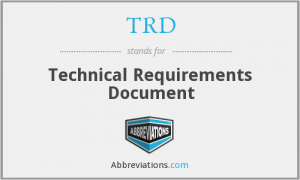
An IT requirements document, they sound so simple, but they are the most often skipped over step in small and medium size organization technology purchasing.
As Joe Jackson sang so accurately, “You can’t get what you want, till you know what you want.”
It may seem obvious but thinking through the specific results you want, before purchasing or evaluating a solution is very important.
Determining IT requirements are essential to information services/technology planning and success. Through exploring and interviewing management, staff, users, and clients/stakeholders/customers the deeper requirements can emerge to guide the process of purchasing, configuring, or possibly building a technology solution. Without this discovery process the end result may not match anyone’s short or long-term needs.
What are the IT requirements Documents?
Types of Requirements that can be related to IT requirement documents
The most common types of software requirements documents are the following. In which they’re usually created during a project:
- Business Requirements Document (BRD)
- BRD outlines “Business Requirements” – i.e. high-level business goals of the organization who requested IT changes, upgrades, or new functionality.
- BRD is usually provided as a single page document containing high-level bullet items.
- Market IT Requirements Document (MRD)
- MRD outlines “Market Requirements” – i.e. one-level deeper than BRs, but still at high-level. The focus is on users or “market.” Think of internal use or nonprofit “markets” as constituents, program participants, stake-holders, and other end-users who’s needs/requirements have to be a part of the requested IT changes, upgrades, or new functionality.
- MRDs are usually provided as a prioritized bullet list or table, and are usually less than 5 pages long.
- Functional Requirements Document (FRD)
- FRD outlines “Functional Requirements”, i.e. detailed functionality of the the requested IT changes, upgrades, or new functionality.
- Depending on the the requested IT changes, upgrades, or new functionality being built, FRDs can be anywhere from ~10 pages to several hundred pages.
- Product Requirements Document (PRD)
- PRD contains all the IT requirements for a “product” or IT project being created – this could be something as simple as the “product” being a new SharePoint widget that will enable an easier work-flow for a department.
- PRDs usually include the same content as FRDs – but also contain “Non-Functional Requirements”
- User Interface Requirements Document (UIRD), Interface Requirements Document
- These documents outline the UI requirements for the IT project, and might include components of already existing web apps, or hosted software to make it easier to launch.
- These usually contain mockups, wireframes, and even production-quality UI prototypes.
- Technical Requirements Document (TRD), Design Requirements Document, Engineering Requirements Document, Development Requirements Document
- The documents are written by engineering teams and contain technical requirements – such as design, architecture, etc – to achieve the requirements outlined in the documents outlined above.